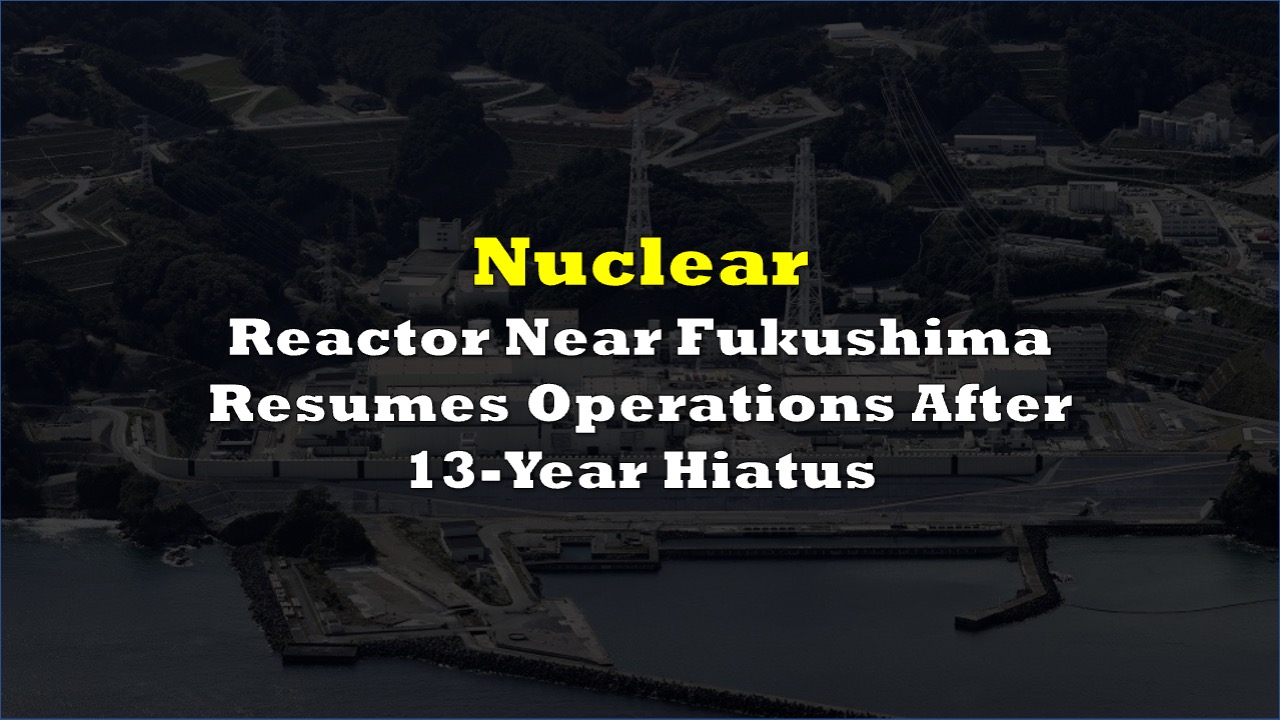A nuclear reactor that withstood the devastating 2011 earthquake and tsunami resumed operations Tuesday, marking a significant step in Japan’s renewed commitment to nuclear energy. The No. 2 reactor at the Onagawa nuclear power plant, located 62 miles north of the ill-fated Fukushima Daiichi facility, is expected to begin generating power in early November.
The restart is particularly noteworthy as Onagawa successfully maintained its cooling systems despite being struck by a 42-foot tsunami during the 2011 disaster. The nearby Fukushima plant, in contrast, saw the meltdown of three reactors following the magnitude 9.0 earthquake and subsequent tsunami.
JAPAN RESTARTS ONSHORE NUCLEAR REACTOR NEAR 2011 QUAKE EPICENTER
— Wall St Engine (@wallstengine) October 29, 2024
The Onagawa No. 2 reactor in Miyagi Prefecture will restart today, marking the first boiling water reactor to come online since the 2011 Fukushima disaster.
Operated by Tohoku Electric, the plant underwent major… pic.twitter.com/jJHvZPsFHy
Following this disaster, Japan shut down all 54 of its commercial nuclear reactors for comprehensive safety evaluations. Onagawa No. 2 becomes the thirteenth reactor to resume operations out of 33 still considered viable. The facility underwent extensive safety upgrades beginning in 2013, including the construction of a 95-foot tsunami wall and enhanced earthquake protection measures, receiving regulatory approval in 2020.
The restart aligns with Japan’s ambitious energy strategy, announced last year, which aims to achieve carbon neutrality by 2050. The government plans to maximize nuclear power usage through reactor restarts, extending operational lifespans, and developing next-generation facilities.
“Nuclear energy, along with renewables, is an important power source for decarbonization,” Chief Cabinet Secretary Yoshimasa Hayashi said on Tuesday. “We will maximize its use while ensuring safety.”
Hayashi also noted that restarting the country’s nuclear reactors is becoming increasingly important for Japan’s economic growth.
Related: Japan’s Utilities Warn New Nuclear Plants Needed to Meet 2050 Net Zero Goal
However, concerns about nuclear safety resurfaced following the January 1 magnitude 7.5 earthquake in the Noto Peninsula, which caused minor damage to two nuclear facilities and exposed inadequacies in regional evacuation plans.
Japan currently has twenty-one nuclear reactors, including six at Fukushima Daiichi and one at Onagawa, that are being decommissioned. These closures resulted from operators choosing to avoid costly safety upgrades required under stricter post-Fukushima regulations.
Tohoku Electric Power Co. President Kojiro Higuchi views the reactor’s restart as symbolic of the region’s recovery from the 2011 catastrophe.
Information for this story was found via AP News, and the sources and companies mentioned. The author has no securities or affiliations related to the organizations discussed. Not a recommendation to buy or sell. Always do additional research and consult a professional before purchasing a security. The author holds no licenses.






